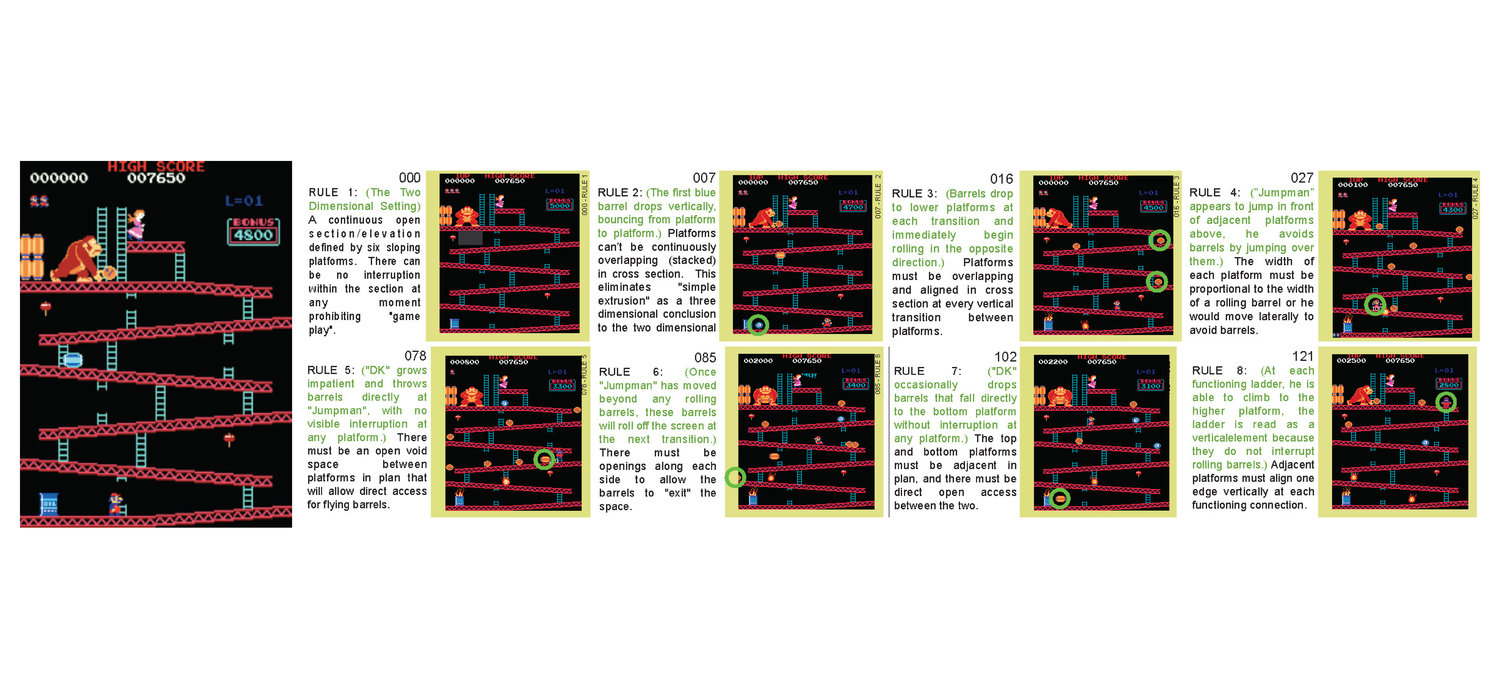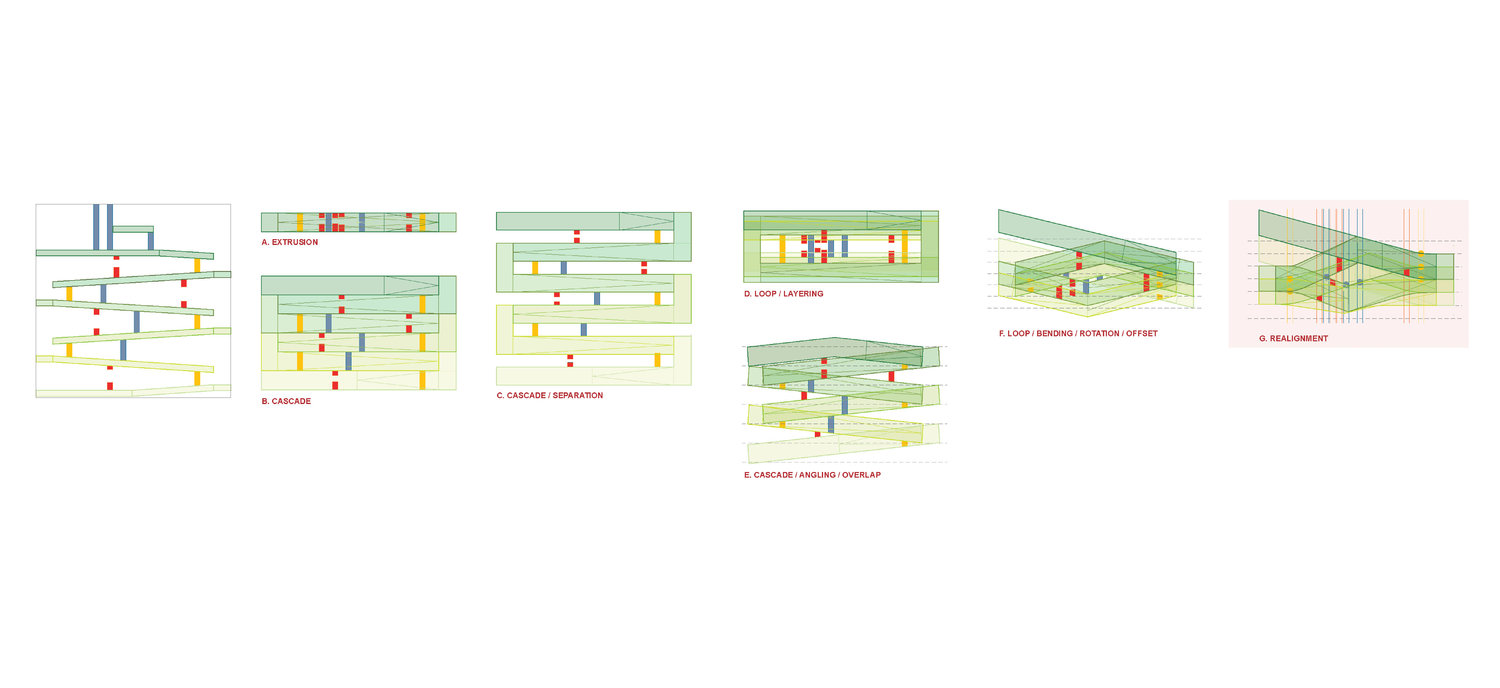




Orthographic projections are the fundamental representational techniques that translate three dimensional space into a two dimensional plane, most commonly appearing as plans or sections. In reading a plan or section, an architect needs at least two or more 2-D projections that suggest and construct a space when combined; one that, regardless of any aesthetic sensibilities and material detail, installs a base level of use, occupancy, and circulation... if not experience.
In Donkey Kong we have just one projection (a section) and through the gameplay and glitches an understanding of use. Therefore, through a reversal of these two elements, we can reconstruct a possible if unexpected 3-D space for Mario, his nemesis, and Pauline.
Originally executed as “Up Up Down Down Left Right Left A B B A” at Harvard’s GSD in 2003; awarded the James Templeton Kelley Thesis Prize
In Donkey Kong we have just one projection (a section) and through the gameplay and glitches an understanding of use. Therefore, through a reversal of these two elements, we can reconstruct a possible if unexpected 3-D space for Mario, his nemesis, and Pauline.
Originally executed as “Up Up Down Down Left Right Left A B B A” at Harvard’s GSD in 2003; awarded the James Templeton Kelley Thesis Prize